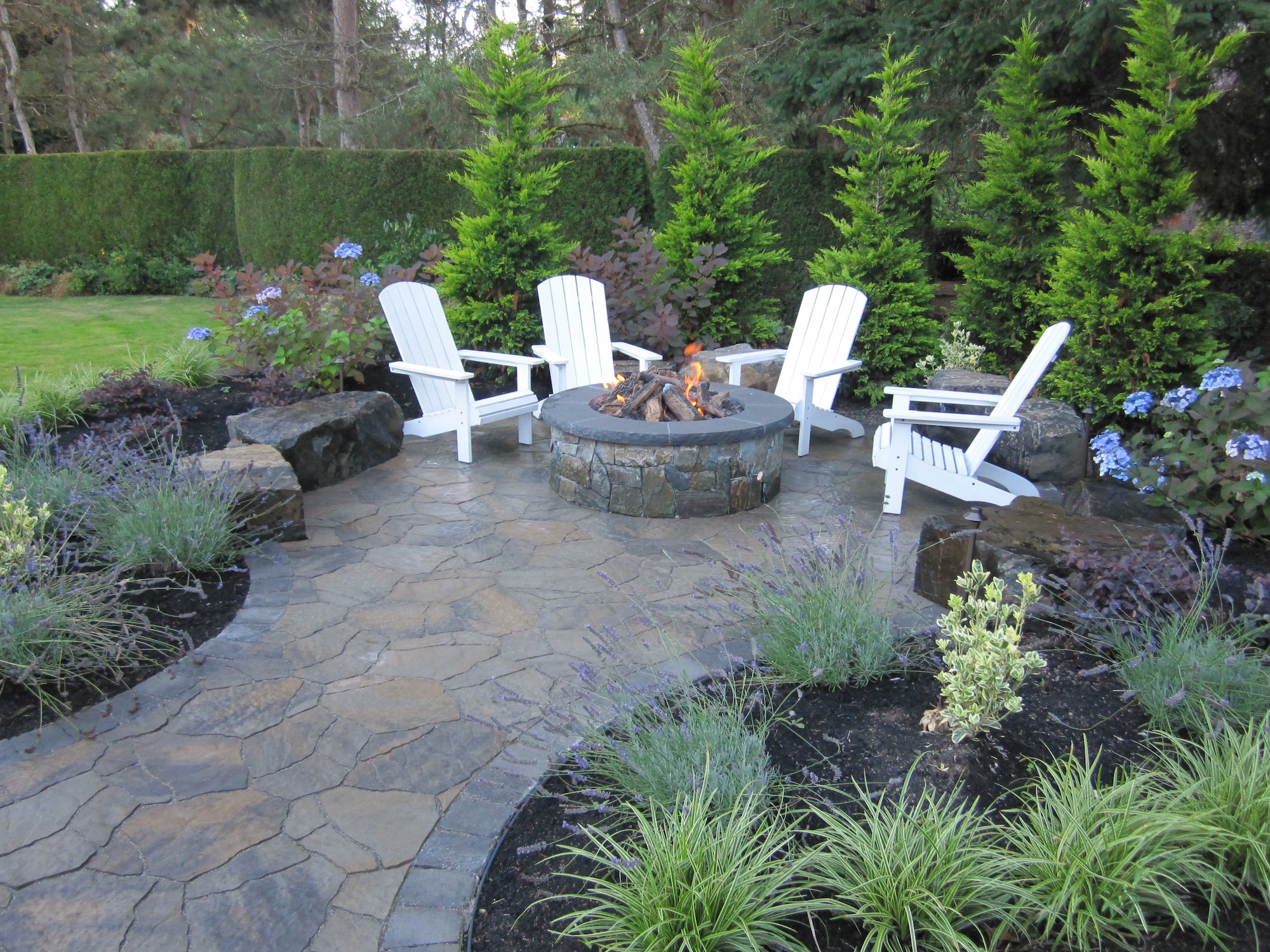Plants around fire pit – When it comes to creating a cozy and inviting outdoor space, fire pits take center stage. But to truly elevate the ambiance, surrounding your fire pit with the right plants is crucial. From fire-resistant varieties to stunning landscaping designs, this guide will help you transform your fire pit area into a safe and visually captivating oasis.
Fire-resistant plants not only add aesthetic value but also ensure safety by minimizing the risk of embers spreading and igniting nearby vegetation. Choose from a range of species like Aloe vera, Echeveria, and Sedum, which boast thick, succulent leaves that can withstand high temperatures.
Fire-Resistant Plant Varieties: Plants Around Fire Pit

Fire-resistant plants are essential for landscaping around fire pits. They provide a buffer zone that helps prevent the spread of flames and embers, reducing the risk of wildfires and protecting nearby structures.
These plants possess specific characteristics that make them resistant to fire. Their leaves and stems often have a high moisture content, which helps them withstand heat and flames. They may also have thick, waxy cuticles that act as a barrier against fire. Some species have dense foliage that creates a canopy that can block embers and slow down the spread of flames.
Recommended Fire-Resistant Plants
- Yucca: Yuccas have thick, leathery leaves with a high moisture content, making them highly fire-resistant. They are also drought-tolerant and require minimal maintenance.
- Aloe: Aloe plants are known for their succulent leaves that store water. This water content makes them resistant to fire and heat. They also have a gel-like substance inside their leaves that is fire-retardant.
- Crassula: Crassula plants have thick, fleshy leaves that are covered in a waxy cuticle. This cuticle acts as a protective layer against fire and helps prevent water loss.
- Echeveria: Echeveria plants are low-growing succulents with rosettes of thick, fleshy leaves. Their leaves have a high moisture content and a waxy cuticle, making them resistant to fire.
- Sedum: Sedum plants are groundcovers with succulent leaves that are covered in a waxy cuticle. They form dense mats that can help prevent the spread of fire and embers.
Landscaping Design for Fire Pit Surroundings

Creating a visually appealing and safe outdoor space around your fire pit requires thoughtful landscaping design. Consider the following factors when selecting plants:
- Plant Size: Choose plants that are proportionate to the size of your fire pit and surrounding area. Avoid overcrowding or planting excessively tall plants that could obstruct views or create a fire hazard.
- Plant Shape: Opt for plants with rounded or spreading shapes that will not interfere with the seating arrangement around the fire pit. Avoid plants with sharp or thorny foliage that could pose a hazard.
- Maintenance Requirements: Select plants that are low-maintenance and can withstand the heat and smoke produced by the fire pit. Consider drought-tolerant species that require minimal watering and are not susceptible to pests or diseases.
Fire Safety Principles
Incorporate fire safety measures into your landscaping design:
- Create a Firebreak: Plant a ring of fire-resistant plants around the fire pit to act as a buffer zone and prevent the spread of flames. Use species like aloe, sedum, or hens and chicks.
- Clear the Area: Remove any flammable materials, such as dry leaves, brush, or overhanging branches, from the immediate vicinity of the fire pit.
- Choose Non-Combustible Materials: Use non-combustible materials like stone, gravel, or fireproof pavers for the fire pit surround and pathways leading to it.
Fire Pit Plant Arrangements

To create a visually appealing and fire-safe fire pit area, careful consideration should be given to the arrangement of plants around it. Factors such as plant height, texture, and color play a crucial role in achieving a harmonious and functional design.
Raised Planters and Rock Gardens
Raised planters and rock gardens offer excellent options for creating visually appealing and fire-safe plant arrangements around fire pits. Raised planters elevate plants, creating a distinct visual layer and providing better drainage. Rock gardens, on the other hand, utilize rocks and stones to create a natural-looking, low-maintenance landscape that effectively prevents the spread of fire.
Plant Combinations and Arrangements, Plants around fire pit
Effective plant combinations and arrangements for fire pit areas include:
- Low-growing groundcovers: Plants like creeping Jenny, thyme, and sedum can create a lush, green carpet around the fire pit, providing a soft and inviting touch.
- Medium-height shrubs: Boxwoods, dwarf hydrangeas, and lavender add structure and color to the arrangement, while remaining low enough not to obstruct the view of the fire.
- Tall plants: Ornamental grasses, such as maiden grass or switchgrass, can provide a dramatic backdrop and create a sense of enclosure, but should be placed far enough away from the fire to avoid any risk.
